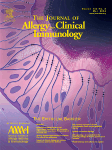
Publication date: Available online 23 October 2017
Source:Journal of Allergy and Clinical Immunology
Author(s): Javier Molina-Infante, Ángel Arias, Javier Alcedo, Ruth Garcia-Romero, Sergio Casabona-Frances, Alicia Prieto-Garcia, Ines Modolell, Pedro L. Gonzalez-Cordero, Isabel Perez-Martinez, Jose Luis Martin-Lorente, Carlos Guarner-Argente, Maria L. Masiques, Victor Vila-Miravet, Roger Garcia-Puig, Edoardo Savarino, Carlos Teruel Sanchez-Vegazo, Cecilio Santander, Alfredo J. Lucendo
BackgroundNumerous dietary restrictions and endoscopies limit the implementation of empiric elimination diets in eosinophilic esophagitis (EoE). Milk and wheat/gluten are the most common food triggers.ObjectiveTo assess the effectiveness of a step-up dietary strategy for EoE.MethodsProspective study conducted in 14 centers. Patients underwent a 6-week two-food group elimination diet (TFGED) (milk and gluten-containing cereals). Remission was defined by symptom improvement and <15 eos/HPF. Non-responders were gradually offered a four-food group elimination diet (FFGED: TFGED + egg and legumes) and a six-food group elimination diet (SFGED: FFGED + nuts and fish/seafood). In responders, eliminated food groups were individually reintroduced, followed by endoscopy.Results130 patients (25 pediatric) were enrolled with 97 completing all phases of the study. A TFGED achieved EoE remission in 56 patients (43%), with no differences between ages. Food triggers in TFGED responders were milk (52%), gluten-containing grains (16%) and both (28%). EoE induced only by milk was present in 18% and 33% of adults and children, respectively. Remission rates with FFGED and SFGED were 60% and 79%, with increasing food triggers, especially after SFGED. Overall, 55/60 (91.6%) of responders to TFGED/FFGED had one or two food triggers. Compared to initial SFGED, a step-up strategy reduced endoscopic procedures and diagnostic process time by 20%.ConclusionsA TFGED diet achieves EoE remission in 43% of children and adults. A step-up approach identifies early a majority of responders to empiric diet with few food triggers, avoiding unnecessary dietary restrictions, saving endoscopies and shortening the diagnostic process.
Teaser
A two-food group elimination diet achieves EoE remission in 43% of patients, identifying early 2/3 of potential responders to a SFGED.A step-up strategy saves endoscopic procedures, shortens the diagnostic process, and avoids unnecessary dietary restrictions.
http://ift.tt/2z3gotL
